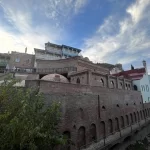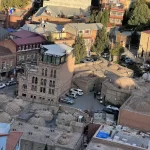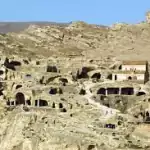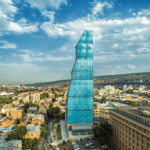Full of history and culture
Tbilisi Open Air Museum of Ethnography will be your first stop. It was founded on April 27, 1966 and encompasses 14 ethnographic zones. Each exhibit presents a certain historic-ethnographic area of Georgia. Together with architectural monuments, the museum presents ethnographic materials. Next will be The National Botanical Garden of Tbilisi, that occupies the area of 161 hectares and possesses a collection of over 4,500 taxonomic groups. After a nice walk in the garden you will rich to the church of David(19th century) by cable car. You olso will see Mtatsminda Pantheon of Writers and Public Figures wich is located near Father David Church. The terrace near the temple offers wonderful views of Tbilisi, which gives a special charm to this place. Using a cable car one more time you will reach to the park of Mtatsminda. The park is situated at the 770 metres height, the highest point of Tbilisi, on the area of more than 100 hectares. You will definitely enjoy views from the highest place of the city.
Uplistsikhe ancient cave town hewn into the rock. Its history begins in the I-II millennium B.C. Uplistsikhe was an important religious, political and cultural centre in the Hellenistic and the late Antique periods. After that you will see the city of Mtskheta ancient capital of Georgia (Kartli) . Here you can see outstanding examples of medieval religious architecture in the Caucasus. They show the high artistic and cultural level attained by this ancient kingdom. Next stop will be Ananuri. A architectural complex on the Aragvi River is one of the best-protected monuments in Georgia. This medieval monument, which is very well preserved, was originally used for military purposes, and only later it became the residence of the Dukes of Aragvi, in the 13th century.






*You Can chose any day from any category of tours and make a mix . You can adjust it to your own taste. Welcome to Georgia!
